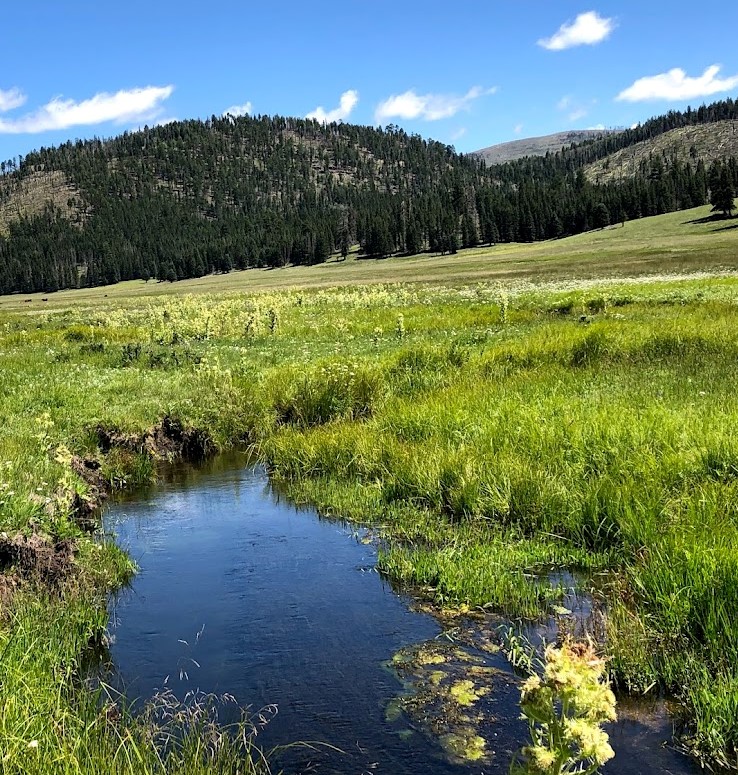Fossils floating along the seabed in Kansas a long long time ago
Kim and I are addicted rock-hounders. We have found petrified wood in New Mexico, fire agates in Arizona, red agates in Utah, and blue agates in the Yellowstone River of Montana.
So when invited by Mark, a friend of Kim’s, to search for fossils in Kansas, we jumped at the opportunity.
Fossils found where?
The fossils below were found in Southeast Kansas, in layers of limestone, a sedimentary rock. In fact, limestone is made up of millions of tiny creatures whose skeletons contained calcite (calcium carbonate). These creatures died on the seafloor of an inland sea that existed for millions of years.
In a few places the creatures contributed to a layer of organic content that was compressed by heat and pressure and transformed into oil. Lots of oil is found in limestones around the world.

Crinoid (bottom left) is an animal, complete with a digestive system and a nervous system (even though many crinoids look like plants). Crinoids ae some of the planet’s earliest animals.

Many tiny living creatures died at this spot on the sea floor, and were buried and fossilized over millions of years.

Golf-tee fossil. Its proper name is Plaxocrinus spine and it is one kind of crinoid. The animal sucks food through its feathery tentacles (missing here) and into its mouth (the head of the tee).

Fossils died when?
The fossils here died in what geologists call the Pennsylvanian period: 300 – 323 million years ago. Its hard for us to imagine 1 million years ago, let alone 300 million.
One comparison is: some of the petrified wood around Albuquerque is about 50 million years old. The dinosaurs died out about 65 million years ago wen a huge asteroid, 7 miles across, hit the earth in the Gulf of Mexico.
The fire agates out of Phoenix are of volcanic origin, and dates of volcanoes in New Mexico are 1-3 million years old. Even though Phoenix is in Arizona, I would guess that Saddle Mountain is 1-3 million years old.

A largish shell in the middle of the pic, with part of its back broken away, and the missing part filled with crystals. Some of the inlay crystals are sparkling, but this doesn’t show very well.

Mix of fossils. The mesh-like one at the top is a coral (3 places). The one like an ice-cream cone at the bottom is probably a linear ammonite. The traditional ammonite is in the shape of a spiral, as in the next pic.

Spiral ammonite, with shell like a snail, firmly entrenched in the rock. This is a small one, see dark-colored penny. But they can be up to a foot across in this area. There have been over 10,000 species of ammonite.
Crude oil from Permian basin was formed when?
Oil is transformed from organic deposits, including fossils. Crude oil is bountiful in the Permian basin of West Texas and southeast New Mexico. The Permian era, about 200 million years old, is not as old as the Pennsylvanian era. Right now, the Permian basin is one of the world’s best oil and gas producers: 6 million barrels of oil per day (almost half of total US production).
Human civilization started when?
Human civilization began in the Fertile Crescent region of Iran and Iraq. This was about 10,000 years ago, and after the last great ice age. At 9,000 BCE, wild sheep flocks were managed in the Zagros mountains. At 7,700 BCE, the first domesticated wheats appeared in the Fertile Crescent. The cities came hundreds of years later, about 4,300 BCE.
Surprisingly, an independent civilization also began in China about 6,500 years ago.
Where was Kansas 300 million years ago?
Kansas was in North America, see the map, but the US was still being formed, as continents were shifting about… ever so slowly. Continental drift is typically one inch per year – the rate that America separated from Africa and Europe in the map.

Pennsylvanian period 300 million years ago. Source: Wikipedia.

The many shapes and sizes of early life forms are mind-blowing. “Early” means roughly 300 million years ago.
Mark — thanks a million for the treat. It was a grand experience.
Please forward this to people you know who might be interested in my new book “How Oil and Gas Companies are Pivoting toward Climate Change.” It’s a hot-topic book!
Please hit “follow” to receive monthly blogs on some of your favorite topics – energy, hiking, and inspiration.
I wish you all the best as you enjoy the cooler weather of the Fall.
+++++++++++++++++++++++++++++++++++++++
For the Lord is a great God, and a great King above all gods.
In his hand are the depths of the earth; the heights of the mountains are his also.
The sea is his, for he made it, and his hands formed the dry land.
Oh come, let us worship and bow down; let us kneel before the Lord, our Maker!
[Psalm 95]
Discover more from Ian Dexter Palmer Ph.D
Subscribe to get the latest posts sent to your email.

Fascinating, Ian. Thanks for sharing!
Thank you, Ian, for this very interesting journey through the world of many types of sea creatures. At my age I can’t go to the places to see these ancient creations.